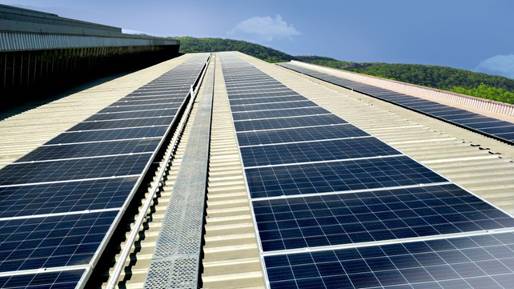Solar energy has taken the world by storm. From houses to offices, from schools to hospitals, more and more establishments are going solar. From an ecological perspective, the world is in a place where renewable energy resources are the better options. The return on investment of solar energy in India is ideal as it provides quick returns. On land, we receive solar energy at the rate of approximately 1,73,000 TeraWatt (one million million watts). India ranks fifth in the list of countries ideal for harnessing and consuming solar energy. This decision was initiated in 2008 when then PM Manmohan Singh launched India’s National Action Plan on Climate Change on June 30, 2008. The aim was to shift India’s energy consumption from fossil fuels to non-fossil fuels like solar and wind energy.
Recently on Sunday, current Prime Minister Narendra Modi co-chaired a conference along with French President Emmanuel Macron on International Solar Alliance (ISA). Modi said he has set a target of achieving 100 GW (gigawatt) of solar power by 2022, out of the total 175 GW the country plans to produce from renewable sources.
Access to electricity has emerged as a fundamental need over a period of years. United Nations also identify access to ‘affordable and clean energy’ as one of the Sustainable Development Goals.
It is estimated that one in five people globally still lack access to electricity. With an estimated increase of 1.7 billion people with access to electricity between 1990 and 2010 and more to be added. The only way forward is renewable green energy.
India’s energy needs have grown tremendously; almost doubling in the new millennium. In 2016-17, India prided itself in moving from energy deficit to energy surplus. Paradoxically, the figures only take into account people who have access to electricity. The data does not take into account around 300 million people who still lack access. Factors such as affordability, transmission, distribution and power outages remain a big concern.
Corporate houses can invest in renewable energy and reduce the burden on traditional ways. Atlas Copco, a leading provider of sustainable productivity solutions inaugurated a factory in 2013, manufacturing industrial and portable compressors for the Indian and global market. Energy efficiency has been a major focus at the facility. An eco-friendly design for rainfall harvesting allows a water autonomy of 8 months a year. The building is IGBC (Indian Green Building Council) Gold certified, in accordance with LEED (Leadership in Environmental Energy and Design) best practices. The plant is now almost autonomous in electricity, powered at 80% with renewable energy. The factory environmental footprint will now save 600 tons of carbon dioxide emissions annually.
Su-Kam Power Systems which deals in power-backup and solar solutions showcased its range of products at the Middle East Electricity meet. Being India’s largest power solutions, it has established itself, as the Middle East is a major market to expand reach in the region.
Thank you for reading the story until the very end. We appreciate the time you have given us. In addition, your thoughts and inputs will genuinely make a difference to us. Please do drop in a line and help us do better.
Regards,
The CSR Journal Team


